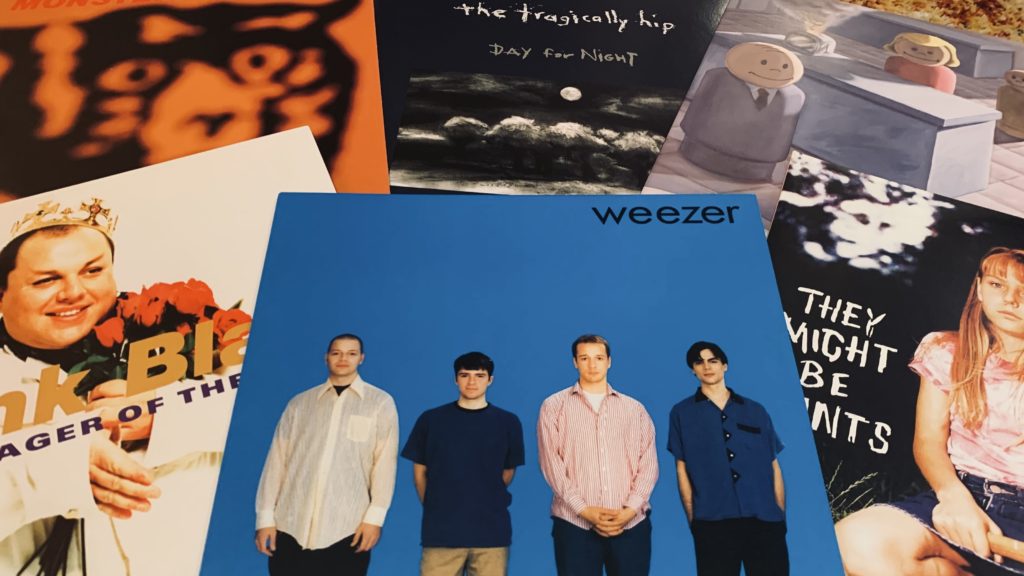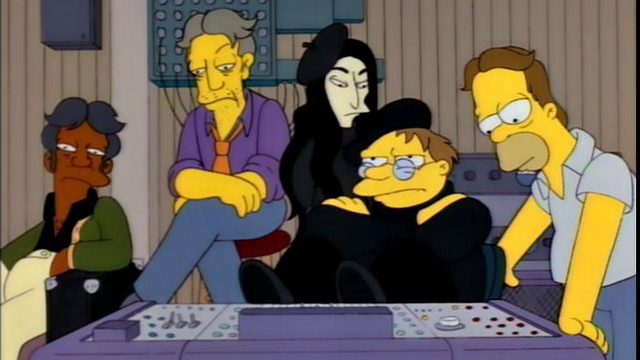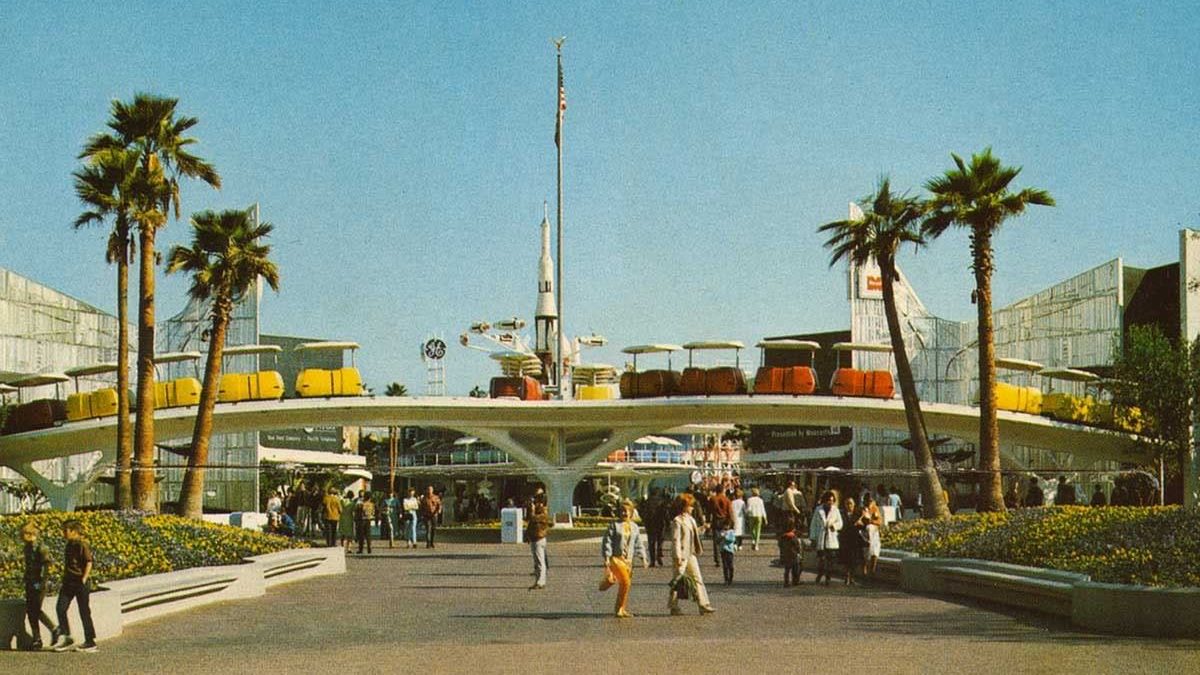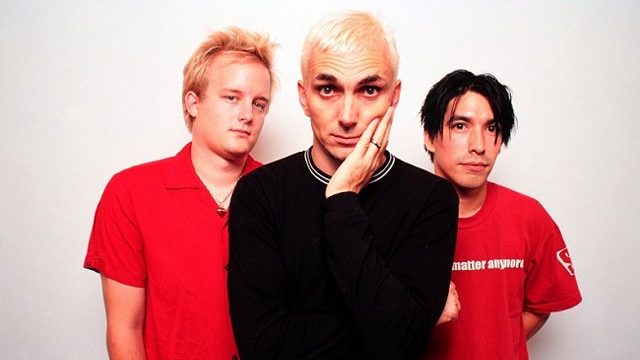Tastemaker is a recurring feature in which Strange Currencies contributors share stories of the events, experiences, and cultural artifacts that helped in shaping their musical tastes.

Certain years hold such significance for specific musical genres, that the mere mention of their four-digit numbers trigger an almost-automatic association: 1959 for jazz; 1967 for psych; 1977 for punk. In the introduction to “90s Month,” I mentioned that the majority of the contributors to Strange Currencies fall within the “micro-generation” known as the “Xennials.” So, what is the key year for those of us born between the late-seventies and the early-eighties?
Had I been a few years older, 1991 would’ve been my watershed. While I can definitively remember hearing “Smells Like Teen Spirit” for the first time, as a seventh grader I felt acutely aware that the moshing teenagers in the song’s instantly iconic video would’ve scoffed at the idea of me entering their pit. If I were born a few years later, perhaps I would’ve greeted the “Nu Metal” scene that represents rock music’s nadir with something other than outright dismissal.
Instead, born in the final months of the seventies, 1994 would ultimately become my year of demarcation. While I had fully embraced many of the heaviest hitters of “alt-rock” by that point – Smashing Pumpkins, Pearl Jam, and the aforementioned Nirvana – 1994 was the year in which I truly started to discover a world of music for myself, adjacent to, but not always under the watchful eye of a brother that was three years my senior. More than any other single influence – friends, magazines, or MTV (which I would only have sporadic access to until my family acquired cable in the summer of 1995) – my main source of information was a radio show on Northern Arizona’s rock station, KZGL.
Nu Trax – I’m 99% certain of the spelling – was a godsend to a fourteen-year-old with a decent base of knowledge, and a healthy desire to lean fully into life as a music nerd. However, as its heyday came just before the moment where nearly every aspect of life migrated online, some of its specifics are hazily remembered – if not lost to time altogether. If I recall correctly, the show ran five nights a week (Monday through Friday), from 10:00 to midnight. If Nu Trax existed prior to the late-spring of 1994, it would be news to me. What I do know is that by the summer, I was a nightly listener.
While today there exists a station with the same call letters in Northern Arizona, the KZGL of the nineties could be found at 97.9 on the FM band. As nineties-era rock stations go, it was pretty typical. The station promos all heavily emphasized the “Z” in the name – the only letter that could possibly compete with “X,” in terms of the ultra-90s emphasis on all things “X-treme.” The popular morning show was Rich & Rowdy, featuring a pair of mildly charismatic hosts that would’ve had to be far more X-treme to even be considered “shock jocks-lite”; as a side note, I got to meet the mulleted “Rowdy” at a couple of my band’s performances in 1995-96. I always got the sense – confirmed by little more than teenaged speculation – that KZGL’s deejays were holdovers from the hair metal era, begrudgingly playing the newfangled “alternative” music, until the masses would return to demanding the Def Leppard and Poison that the disc jockeys had cut their teeth on.
Juli Page was different. As the host of Nu Trax, Page lent an immediate credibility to the show, simply by projecting the fact that she seemed to genuinely love the music that she played nightly. The show’s late-night time slot gave it the air of an after-hours afterthought for the typically heavily-formulaic daytime programming. As such, it gave Page the opportunity to play album cuts (rare for the station), take requests for songs that weren’t likely to be played otherwise, and treat the show as something of a staging ground for artists who hadn’t yet – or wouldn’t ever – make it into heavy rotation on KZGL.
One such band was already a venerable indie rock institution by the summer of 1994. I had heard of Sonic Youth before, but it was on Nu Trax that I actually heard the group for the first time. “Bull in the Heather” would ultimately be the closest thing that Sonic Youth would ever have to a true hit, and though it would eventually find its way into KZGL’s regular rotation, it always sounded more at home on Nu Trax. I bought its parent album (Experimental Jet Set, Trash and No Star) shortly after hearing “Bull in the Heather,” and by the end of the summer, I would also own the group’s masterpiece, 1988’s Daydream Nation.
One of Juli Page’s recurring features for Nu Trax was a segment called “The Band that Begat.” This was typically part of a call-in contest, in which listeners could win CDs, KZGL memorabilia, or concert tickets. Page would play a song by a current artist, and the caller would have to identify the act that they had previously been a part of. I had already been made aware of Sugar, due to the singles from 1992’s Copper Blue, but it was during a “Band that Begat” segment that I first remember hearing Bob Mould’s previous band, Hüsker Dü. Not long after hearing “Could You Be the One?,” a copy of the band’s Warehouse: Songs and Stories found its way into my household – oddly enough, due to my younger brother signing up for the BMG CD club.
Another “Band that Begat” regular was Frank Black. I had heard – and liked – singles from his self-titled debut the previous summer on a pair of Phoenix-area stations that my older brother and I listened to before moving to Flagstaff, but it was on Nu Trax that I first heard “Headache,” the lead single from 1994’s Teenager of the Year. Page also played the album cut “Calistan,” leading me to order Teenager from my own BMG account. While it was a somewhat slow grower – aided immensely by the “shuffle” feature on the 100-disc CD changer that I would purchase during the following summer – Teenager of the Year remains one of my absolute favorite albums, over twenty-five years, and hundreds of listens, down the road.
Of course, Frank Black’s Pixies bandmate, Kim Deal, also featured on “The Band that Begat.” “Cannonball” had already made The Breeders’ 1993 LP Last Splash a bonafide hit by the time that Nu Trax arrived, but the show regularly featured other songs from the record. While “Divine Hammer” is my favorite of those other songs, to this day, I can’t hear “Saints” – and its refrain of “summer is ready when you are” – without thinking of the summer of 1994. Also, its opening riff is still one of the things that I’m most likely to play when picking up a guitar.
As I mentioned before, Nu Trax regularly featured a call-in trivia contest. Over the time that I listened to the show, I won this prize on several occasions – so many in fact, that I was convinced that the “one win per month” policy was instituted solely because of me. I won a lot of CDs, but aside from Mike Watt’s Ball-Hog or Tugboat?, most of them were traded in to record stores for albums that I wanted more; remember when CDs were such a commodity that you could actually get money for trading them in? My most memorable Nu Trax contest wins came with the time that I got Juli Page to say the name of my band on-air after answering a question about the Ides of March, and the two instances in which I won concert tickets; one of those will be a story for a future time.
The first concert ticket victory happened right around the time of my fifteenth birthday, when I won a pair of passes to see Stone Temple Pilots at what was then known as Blockbuster Desert Sky Pavilion in Phoenix. STP – who were legitimately huge at that time, and got regular play during KZGL’s “normal hours” – were touring for 1994’s Purple. I gave one friend my second ticket, and got J. Long to buy one of his own so that he could join us. Opening that show was Arizona’s own Meat Puppets, themselves riding high on the surprising success of “Backwater” – another KZGL mid-day staple. While I’d eventually learn to love that song, it initially seemed a little too “trad rock” to me. However, “Never to Be Found” – an album cut from 1994’s Too High to Die – immediately grabbed me when Juli Page played it in the run-up to the concert. Setlist.fm can’t confirm it, but I’m pretty sure that the Puppets – who would soon become one of my favorite bands – played it at the show.
While Nu Trax would direct me toward some of my eventual all-time favorite bands and artists, it also led me to a few whose impact would be more short-lived. One such example was Jawbox, whose third album – For Your Own Special Sweetheart – I purchased via BMG, after “Cooling Card” became a regular feature of my nightly listens. Though the album didn’t become a favorite, it served as something of a primer for my eventual introduction to other post-hardcore groups, particularly Jawbox’s Washington, D.C. scene-mates, Fugazi.
If there is any one song that I most associate with Nu Trax, it’s Mazzy Star’s masterful “Fade Into You.” While it had already made its way into more mainstream outlets by the summer of 1994, the song wasn’t yet the shorthand route for evocations of dreamy romanticism that it has since become. A regular feature of the show’s latter half, “Fade Into You” will always, for me, represent the perfect realization of summer nights filled with intrigue, but laced with an undeniable melancholy.
Blur would be the victor in the “Oasis or Blur?” debate, simply on the merit of not being Oasis. While I would eventually come to really like the band – and yeah, I suppose Oasis had some great tracks too – I was never really taken by “Girls & Boys” during its regular appearances on Nu Trax. It’s definitely grown on me over time, even if my answer to the question at the top of this paragraph is still a resounding, “SUPERGRASS!”
As I mentioned before, my family didn’t have cable TV during the summer of 1994, so I’m not sure if Weezer’s “Undone – The Sweater Song” – had made the rounds yet on MTV by the time that Juli Page began playing it on Nu Trax. What I do know is that I loved it. Immediately. By the time that I found the album at a Best Buy in Phoenix toward the end of the summer, Page had also played “Surf Wax America” on the show. Of course, I would have heard the “Blue Album” eventually, but finding it when I did, I got to be the one to introduce it to my friend group – an important distinction for what would seemingly become the ultimate “friend group album” for a particular brand of teenager in my generation.
As summer turned to fall, Nu Trax would remain an important part of my continuing musical education, but the carefree schedule of the previous few months gave way to the slightly more structured routine of my sophomore year of high school. I may not have been a nightly listener – at least not for the full two hours – but the show would still provide the first exposure to my most highly-anticipated albums of that fall: Dinosaur Jr’s Without a Sound (“Feel the Pain”), They Might be Giants’ John Henry (“Snail Shell”), and R.E.M.’s Monster (“What’s the Frequency, Kenneth?”).
It was later that year that I would be introduced to eventual mainstays like Sunny Day Real Estate (“Seven”) and The Tragically Hip (“Nautical Disaster”) by way of Nu Trax. However, interestingly enough, those songs that I associate with the winter of 1994-95 – while still great – lacked the jovial, colorful tone of the ones that had defined the previous summer.
By the summer of 1995, Nu Trax had become a far less central part of my musical life than it had been the previous year. Both my older brother – who I shared a room with – and I had amassed large enough collections to fill the aforementioned 100-disc changer. Shuffling through those albums would largely take the place of listening to the radio. I’d still tune in from time to time – particularly when I was anticipating hearing an advance single from an upcoming album – but instead of viewing Nu Trax as my main source for new music, I was becoming more reliant on magazines, recommendations from friends, and filling out the back catalogs of the artists that I already liked.
If I recall correctly – and this is where my memory gets particularly fuzzy – Juli Page left Nu Trax at some point in early 1996. A different host inherited the time slot, but I believe that the show kept the same name for some time afterward. Whether as a consequence of a new host, station demands, or changing musical styles, Nu Trax, as I knew it, was dead. The wide open, unpredictable world of immediately-post-Nirvana alternative rock had largely given way to a staid conservatism, defined by humorless “post-grunge” retreads like Silverchair and Seven Mary Three. After the first time that I heard the latter band on Nu Trax, I never listened to the show again. In the years since, radio has been a virtual non-factor in my life, despite my continuing – and deepening – obsession with music.
Juli Page apparently stayed in radio, albeit not with KZGL. In prepping for this piece, I found an article indicating that – at least as recently as 2019 – she was deejaying for another Northern Arizona station, KVNA. I’ll admit that I was a little hurt when I saw that she listed Greta Van Fleet as one of her favorite new bands, but don’t be sad, Juli; we’ll always have “Fade Into You” and the Ides of March.




